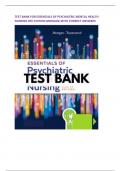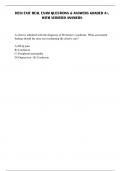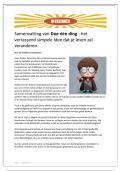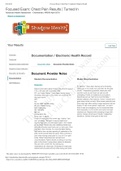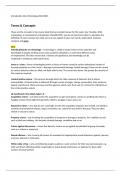Exam (elaborations)
TEST BANK FOR ESSENTIALS OF PSYCHIATRIC MENTAL HEALTH NURSING 8TH EDITION MORGAN|WITH CORRECT ANSWERS
TEST BANK FOR ESSENTIALS OF PSYCHIATRIC MENTAL HEALTH NURSING 8TH EDITION MORGAN|WITH CORRECT ANSWERS TEST BANK FOR ESSENTIALS OF PSYCHIATRIC MENTAL HEALTH NURSING 8TH EDITION MORGAN|WITH CORRECT ANSWERS
[Show more]
